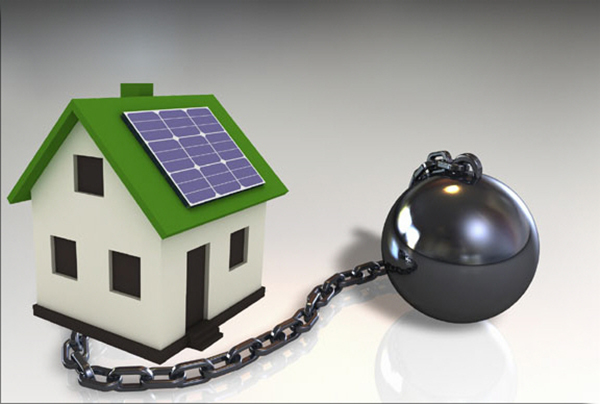
Going Solar Doesn't Have to Break the Bank
No matter where you live, you’ve probably noticed a new trend taking shape in your city. Solar panels are popping up everywhere, at a much faster rate than ever before.
There was a time when going solar was a badge of honor for environmentally concerned citizens or renewable-energy minded Hollywood elite progressives who had the spare cash to invest in purchasing their own solar systems. But for the rest of the population in the rest of the country, going solar seemed impractical and expensive.
Solar Has Changed With the Times
My, how times have changed. Since its initial development, photovoltaic technology has gotten more affordable and more efficient each year. During the 1950s, solar energy came at a price of $300 per watt. Now, the cost is less than a dollar per watt, and the manufacturing costs are even less than that.
Because of falling prices, the average consumer can now expect an excellent return on investment when they go solar, even if they live in parts of the country known more for dreary weather than for sunny days.
Solar arrays designed for home use tend to cost between $10,000 and $30,000, after the federal tax credit is taken into account. On average, these systems pay for themselves within a decade or so, through monthly electricity savings. After the break-even point, clients save even more on their monthly expenses. Solar panels typically last for 25 years or more. That’s a lot of electricity bills that don’t have to be paid.
So How Can You Cover the Cost of Going Solar in the Short Term?
But there’s still the matter of covering the costs associated with actually going solar in the first place. Or is there?
As it turns out, not having the funds to purchase a solar system outright is no longer a barrier in many parts of the country. Solar leasing programs and power purchase agreements are currently permitted in all but five states.
These solar financing programs allow those who want to take advantage of the economic and ecological benefits of going solar to do so, without having to pony up the entire purchase price and installation cost all at once.
Instead of purchasing their solar systems, consumers can simply lease them from the provider. Leasing programs don’t have quite the same ROI as outright purchases, but they still offer substantial savings, low or zero up-front cost, and transferability, which allows the solar lease to be taken over by a new lessee, should the customer decide to sell their home.
Solar Leasing Vs. Power Purchase Agreements
Like a solar lease, a solar power purchase agreement, or PPA offers a low-cost solution for going solar. The difference is that instead of leasing the actual solar system, the client allows the solar company to install the array in exchange for the right to purchase electricity at a set rate for the duration of the agreement.
The ability to guarantee one’s electricity costs for an extended period of time is a great thing, especially in light of the unpredictability of fossil fuel costs. Solar PPA’s often feature a purchase option once the PPA has expired.
[Photo Via: ZeroDownSolar]
Start making more
money today!
Search Categories
Tags
Tag Cloud
Latest from Twitter
Contact Us
Call us at 310-540-8900 or fill out the form below and we’ll tell you how you can get high quality leads for free*.
* Get up to 10% free leads on your first order!